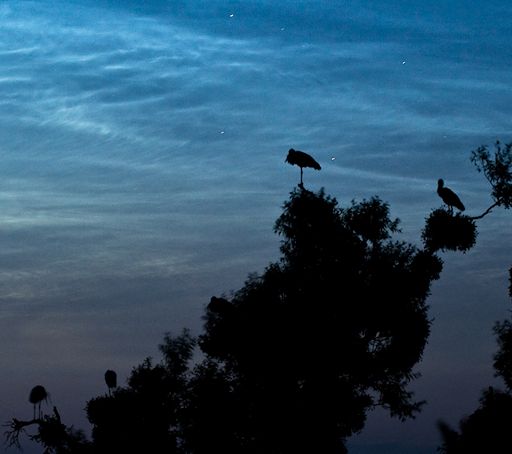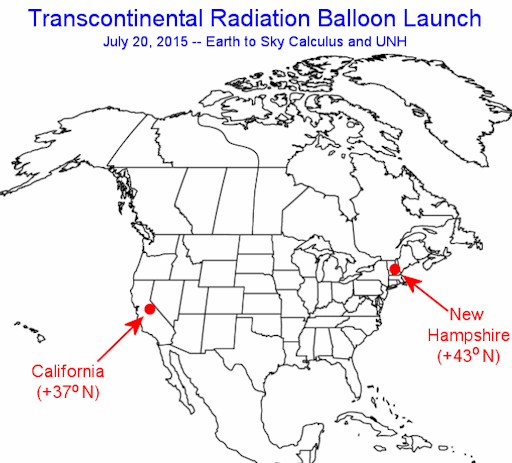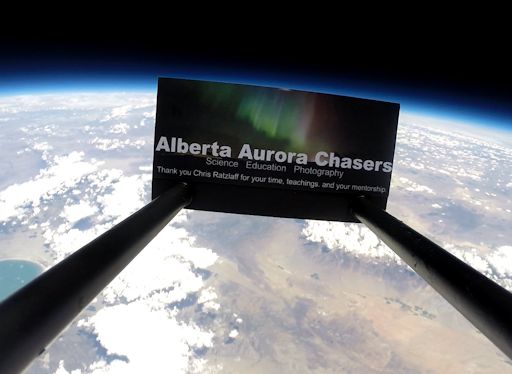Come to Tromsø and share Marianne's passion for rural photography: Chasethelighttours.co.uk invites you to experience "Heaven on Earth" with an aurora, fjord, fishing, whale watching, photography or sightseeing tour. | | |
QUIET SUN: Solar activity remains very low. No sunspots are actively flaring and, as a result, the sun's X-ray output has flatlined. NOAA forecasters estimate a minuscule 1% chance of M- or X-class solar flares on July 17th. Solar flare alerts: text or voice.
STORKS AND NOCTILUCENT CLOUDS: A little-known fact about the natural history of Poland: Many of the country's young storks are born under ripples of electric blue. "Here in Poland, the summer season for noctilucent clouds (NLCs) coincides with the nesting season for storks," explains photographer Marek Nikodem, who has been documenting the coincidence for years. His latest snapshot caught the silhouettes of four mother birds overlooking their nests:

"This image was taken on July 14th, 1 hour before midnight in Szubin, Poland," Nikodem says. On July 15th and 16th, the clouds intensified, providing even more illumination for midnight nesting. "We are seeing plenty of storks," he says.
NLCs are Earth's highest clouds. Seeded by meteoroids, they float at the edge of space more than 80 km above the planet's surface. The clouds are very cold and filled with tiny ice crystals. When sunbeams hit those crystals, they glow electric-blue.
Noctilucent clouds first appeared in the 19th century after the eruption of super-volcano Krakatoa. At the time, people thought NLCs were caused by the eruption, but long after Krakatoa's ash settled, the clouds remained. In recent years, NLCs have intensified and spread with summer sightings as far south as Utah and Colorado. This could be a sign of increasing greenhouse gases in Earth's atmosphere.
Observing tips: Look west 30 to 60 minutes after sunset when the Sun has dipped 6o to 16o below the horizon. If you see luminous blue-white tendrils spreading across the sky, you may have spotted a noctilucent cloud.
Realtime NLC Photo Gallery.
TRANSCONTINENTAL SPACE WEATHER BALLOON LAUNCH: On Monday, July 20th, the students of Earth to Sky Calculus, in collaboration with the University of New Hampshire, will conduct the first-ever transcontinental launch of Space Weather Balloons. The group will be split in two, half in New Hampshire and half in California, and release balloons simultaneously 2947 miles apart. The purpose of the experiment is to discover how Earth's atmosphere responds to solar activity on continental scales.

The payload of each balloon will be equipped with an array of cosmic ray sensors capable of measuring measure neutrons, X-rays and gamma-rays at altitudes as high as 120,000 ft.
Regular readers know that we have been launching "radiation balloons" for nearly two years. In the past 6 months alone, the program has detected three disturbances in the stratosphere caused by CMEs and geomagnetic storms. So far the measurements have been localized to California and Nevada. The July 20th experiment is a step toward expanding our program across North America.
CROWD-FUNDED RESEARCH: The California half of the Transcontinental Launch is possible thanks to a $500 donation from the Alberta Aurora Chasers. To say "thanks", we flew their logo 111,400 feet above Earth's surface:

Update: White Mountain Science, Inc. has just agreed to sponsor the New Hampshire half of the Transcontinental Launch. Readers, if you would like to join them in supporting this crowd-funded research, and see your logo or favorite photo at the edge of space, please contact Dr. Tony Phillips to make arrangements.
Realtime Space Weather Photo Gallery
Realtime Aurora Photo Gallery
Realtime Pluto Photo Gallery
Realtime Sprite Photo Gallery
Every night, a network of NASA all-sky cameras scans the skies above the United States for meteoritic fireballs. Automated software maintained by NASA's Meteoroid Environment Office calculates their orbits, velocity, penetration depth in Earth's atmosphere and many other characteristics. Daily results are presented here on Spaceweather.com.
On Jul. 17, 2015, the network reported 17 fireballs.
(16 sporadics, 1 alpha Capricornid)

In this diagram of the inner solar system, all of the fireball orbits intersect at a single point--Earth. The orbits are color-coded by velocity, from slow (red) to fast (blue). [Larger image] [movies]
Potentially Hazardous Asteroids (
PHAs) are space rocks larger than approximately 100m that can come closer to Earth than 0.05 AU. None of the known PHAs is on a collision course with our planet, although astronomers are finding
new ones all the time.
On July 17, 2015 there were potentially hazardous asteroids.
Notes: LD means "Lunar Distance." 1 LD = 384,401 km, the distance between Earth and the Moon. 1 LD also equals 0.00256 AU. MAG is the visual magnitude of the asteroid on the date of closest approach. | | The official U.S. government space weather bureau |
| | The first place to look for information about sundogs, pillars, rainbows and related phenomena. |
| | Researchers call it a "Hubble for the sun." SDO is the most advanced solar observatory ever. |
| | 3D views of the sun from NASA's Solar and Terrestrial Relations Observatory |
| | Realtime and archival images of the Sun from SOHO. |
| | from the NOAA Space Environment Center |
| | the underlying science of space weather |
| | Web-based high school science course with free enrollment |

